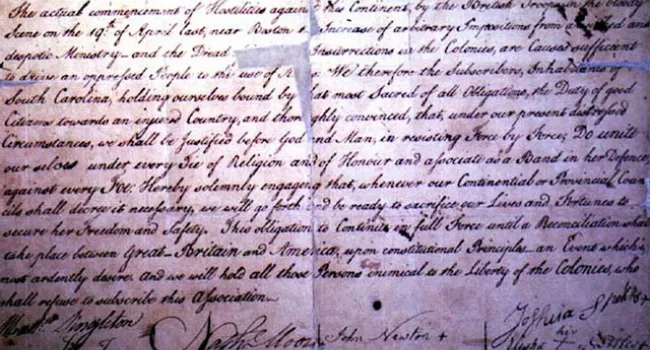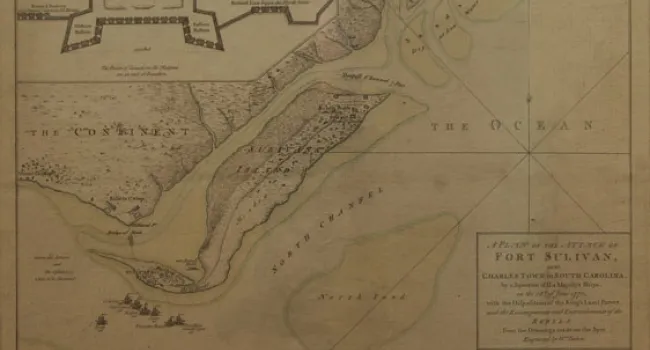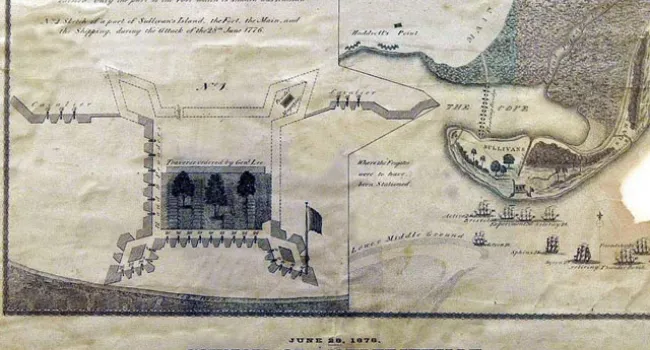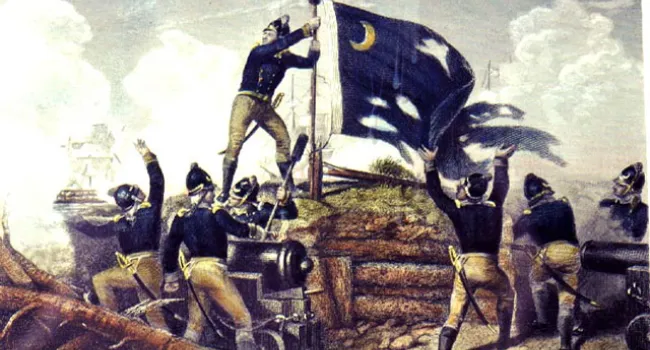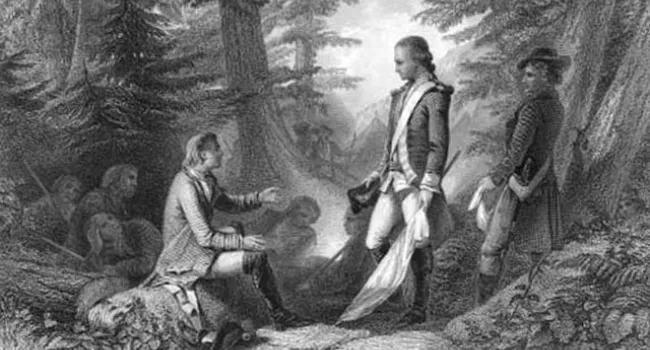
Battle of Eutaw Springs. Fought late in September of 1781, this was the last significant battle of the Revolution in South Carolina. General Nathanael Green and his forces did not win, but forced the British army to retreat from the Santee toward Charleston. Charleston was still under the control of the British six weeks later when Lord Cornwallis surrendered his army to Washington at Yorktown, in Virginia, on October 19, 1781. The last British troops did not leave American soil until two years later, when a peace treaty was finally signed in Paris in the fall of 1783. On December 14, 1782, the British withdrew from Charleston, taking with them 4,000 South Carolina Loyalists who had gambled that the revolutionary patriots would not win--and had lost everything. Drawn by Robert Hinshelwood for "Graham's Magazine."
Courtesy of the South Caroliniana Library.
Standards
- 4.2.P Analyze the sequence of events that led to the establishment of the U.S. as a democratic republic.
- This indicator was developed to encourage inquiry into the process which led to the formation of the U.S. government, including the convening of the Continental Congresses, the passage of the Articles of Confederation, and the adoption of the U.S. Constitution.
- Political and economic developments underscored how the colonists in British North America had become uniquely American, prompting the development of a new nation. Drawing on their experience under British rule, the founding generation created a government with shared powers between the state and federal institutions.

